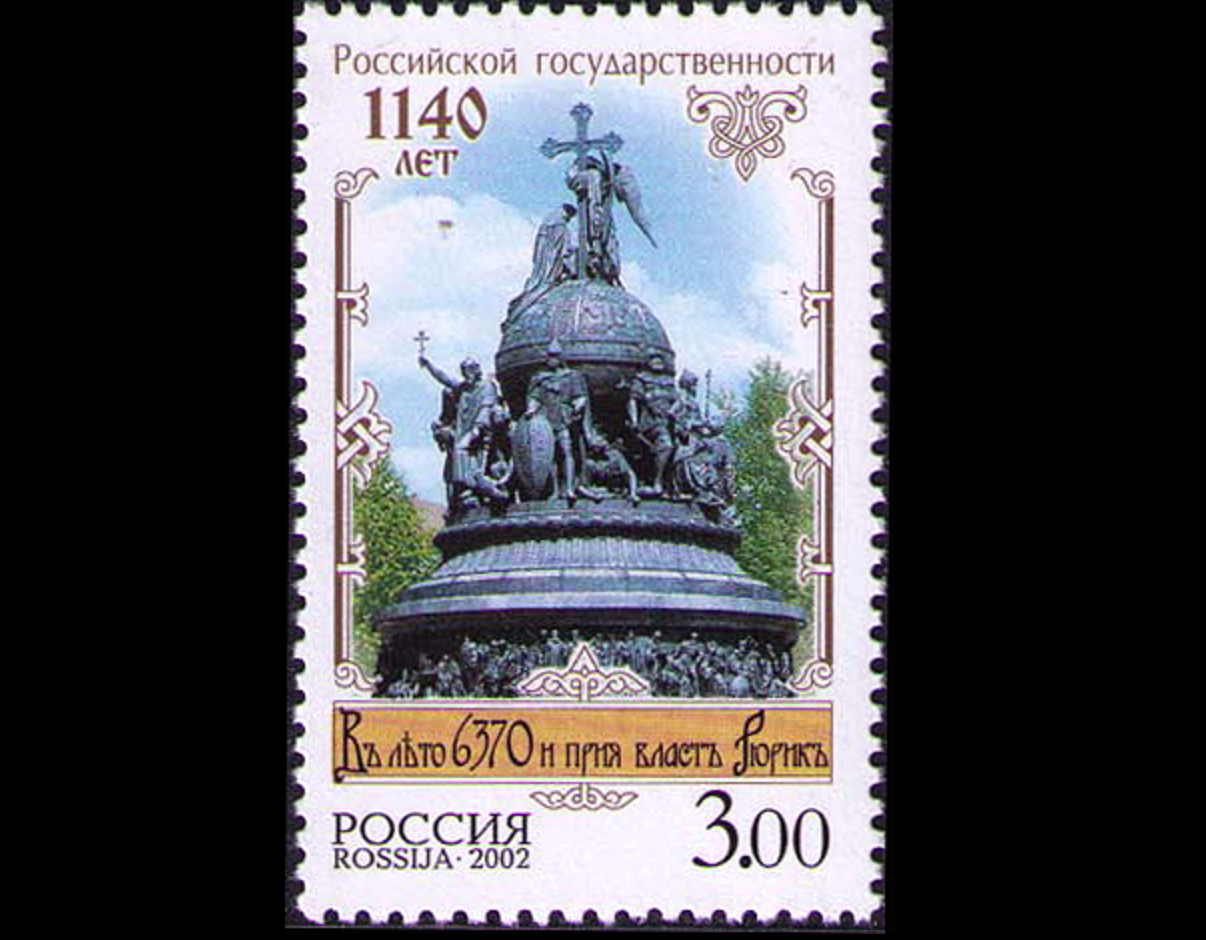187: Russia is the pacing threat that challenges the Pentagon. Gregory R Copley

Image: The Millennium of Russia monument (unveiled on 8 September 1862) on a postage stamp dedicated to the 1140th anniversary of Russian statehood in 2002. Public domain. Gregory R Copley, The New Total War of the Twenty-first Century and the Trigger of the Fear Pandemic, in re: Russia is the pacing threat, the threat against which the US must pace itself (Pentagon locution). Putin has consolidated power more than almost any tsar. However, Russia is derided for its weak economy; DoD respects it because it’s regaining power that it lost during the end of the Cold War, which long had an economy about the size of the Netherlands’s. Now its doing better than in 1990. Russia is using its defense thinking far more efficiently than it did under the USSR; far more sophisticated and polished. It has a global capability more than any other country, well past China. Russia has global-reach strategic weapons, incl global hypersonic glide, forcing the US to develop countermeasures. These must be cheaper than the Russian eqpt or the defender will go broke. Cyber- and submarine warfare—Russian technology is excellent. Are Syria and Libya where Russia is testing against asymmetrical warfare weapons? Yes. More important: testing troops and doctrine, and bldg alliance structures. Russia is there to nullify its ally, Turkey. Does Moscow regard Beijing as sturdy? No. Russia, India and the US look like the last men standing. .. .. .. .. .. .. .. .. Analysis. By Gregory R. Copley, Editor, GIS/Defense & Foreign Affairs. There are sound reasons why the United States defense establishment regards Russian military forces as the “pacing threat” to the US, despite the fact that the US gross domestic product was, by 2019, some12.6 times that of Russia.1 The disparity in economic terms between the US and the USSR approaching the time of the collapse of the Soviet Union was, in reality, even greater than the disparity in eco-nomic headline figures of 2019. Despite this, the US had no hesitation in the late Cold War period in identifying the USSR as the primary existential threat — the “pacing threat” — to the United States and the West. Post-Soviet Russia is today substantially more strategically capable in many ways, and more flexible than was the USSR at its height. Russia, more than the People’s Republic of China (PRC), has significant global reach and capability, even if the PRC seems to have demonstrated the most visible threat in-tent against US interests in recent years. Defense planning must always be against capability, rather than intent. Intent can change in an instant; capability change takes years. And the concept of a “pacing threat” is designed to recognize that reality, rather than to judge the hostile intent of a foreign power. Yes, the Cold War demonstrated that the size differentials between the US and the Soviet economies was one of the ultimate determinants in the ultimate col-lapse of the USSR. As a result, the economic disparity between today’s United States and Russia implies that a direct, strategic-level kinetic confrontation between the two remains improbable on the face of it. But the reality is that total war in the 21st Century implies a more amorphous field of strategic maneuver, with minimal direct military contact and more indirect maneuver. It is still not inconceivable that the US and Russia will need to find common ground in the foreseeable future. It is probable that, at some stage, the US must attempt to split Rus-sia, strategically, from its alliance-of-convenience with the PRC, in the same way that the initiative by US Pres. Richard Nixon exploited the Sino-Soviet rift in 1972.